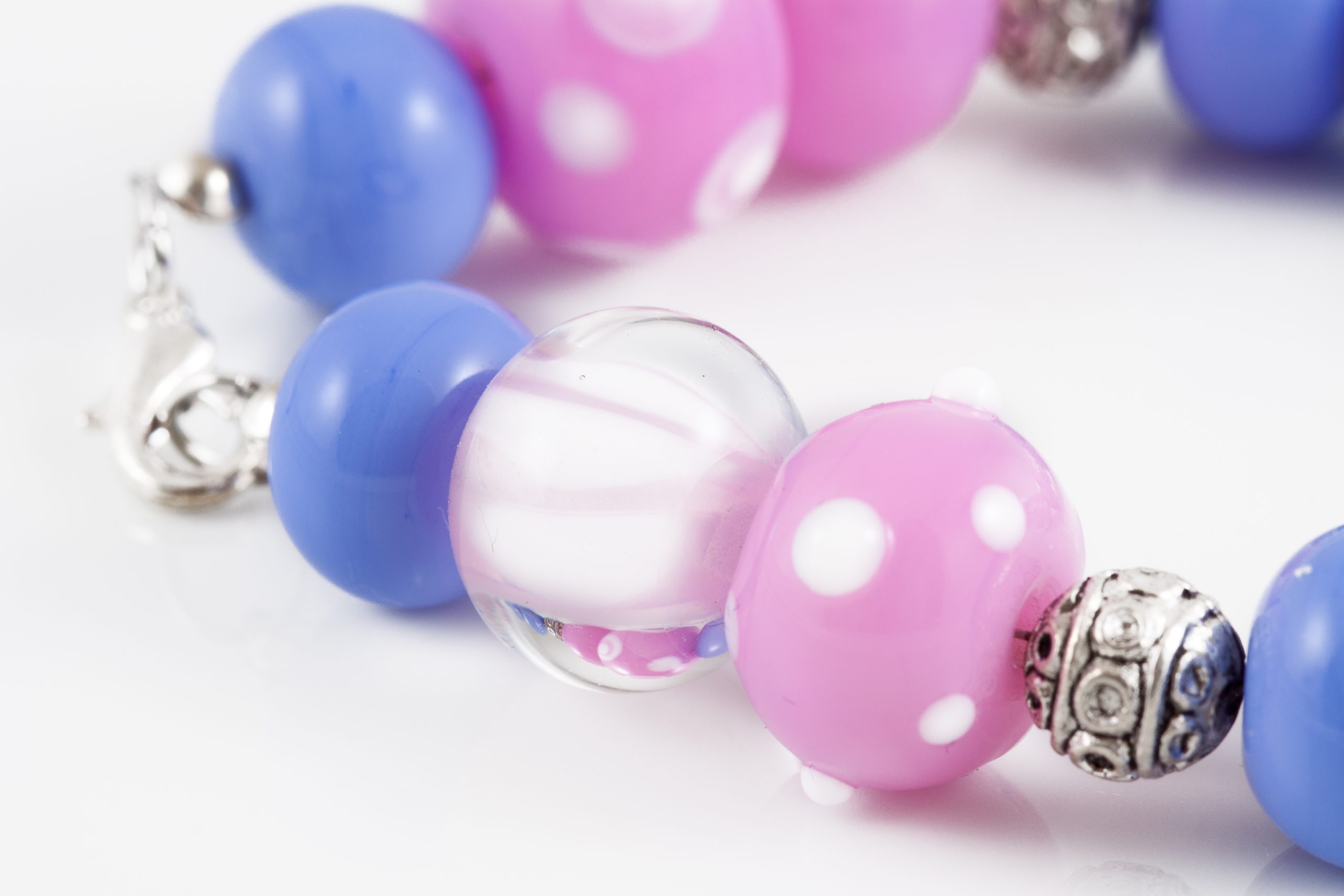The rich legacy of Venetian bead jewelry dates back centuries, originating from the glassmaking traditions of Murano Island in Venice. These exquisite beads, crafted by skilled artisans, have been cherished for their intricate designs, vibrant colors, and the unparalleled craftsmanship that goes into their creation. From their role in ancient trade to their place in modern fashion, Venetian bead jewelry has evolved while retaining its timeless appeal. In this blog, we explore the history, craftsmanship, and enduring influence of these beautiful Murano beads.
Origins of Venetian Beads
Venetian bead jewelry can trace its origins back to the 13th century when the glassblowing techniques of Murano were perfected. The island became a hub for Italian beadwork, with artisans creating traditional glass beads that were used not only as adornments but also as valuable trade items. These beads were prized for their vibrant colors and intricate patterns, making them a symbol of luxury and artistry across the world.
Murano Beads: A Legacy of Craftsmanship
The creation of Murano beads is a testament to the expertise and dedication of the artisans who have passed down their skills through generations. These beads are made using glassblowing and lampworking techniques, which involve melting glass and forming it into beads. The process is meticulous, ensuring that each bead is unique. Today, Venetian bead jewelry made from these iconic beads continues to represent the high standards of Italian beadwork.
Millefiori Technique: Art in Every Bead
One of the most renowned techniques in Venetian bead jewelry is Millefiori, meaning “a thousand flowers.” This method involves layering different colors of glass to create intricate floral patterns. The Millefiori technique is not only a showcase of artistic skill but also a nod to the centuries-old tradition of Venetian glassmaking. Murano beads crafted using this technique are highly valued for their beauty and complexity, making them a staple in both traditional glass beads and modern jewelry designs.
Renaissance Revival of Bead Making
The Renaissance period was a time of renewed interest in the arts, and Venetian bead jewelry saw a revival. Venetian artisans began experimenting with new techniques, including glassblowing methods that allowed them to create hollow glass canes. These canes were later cut and shaped into beads, allowing for more intricate designs and colors. The demand for traditional glass beads grew, and Venetian beadmakers exported their creations to regions as far away as Africa and Asia, where they became symbols of wealth and status.
Venetian Beads in Modern Jewelry
Despite their historical roots, Venetian bead jewelry has remained relevant in contemporary fashion. Designers today incorporate Murano beads into their collections, blending traditional craftsmanship with modern aesthetics. Whether used in bold statement pieces or delicate accessories, these beads bring a touch of elegance and history to any design. Additionally, the popularity of vintage jewelry beads has surged, with collectors and jewelry enthusiasts alike seeking out these unique pieces for their timeless appeal.
Venetian Beads in Trade and Commerce
Historically, Venetian bead jewelry played a crucial role in global trade. Known as “trade beads,” these pieces were exchanged for goods such as spices, gold, and textiles. Murano beads were particularly prized in Africa, where they were used as currency and even as symbols of power. The Venetian trade in beads helped to solidify Venice’s position as a major player in global commerce. Today, vintage jewelry beads from this era are highly sought after by collectors, valued for their historical significance and craftsmanship.
The Artisans of Murano
The artisans of Murano have been the heart and soul of Venetian bead jewelry for centuries. These craftsmen are responsible for maintaining the traditions of Italian beadwork, passing down their skills through generations. Even in today’s modern world, the creation of Murano beads remains a labor-intensive process, with artisans carefully crafting each bead by hand. Their dedication ensures that the legacy of Venetian bead jewelry continues to thrive, even as the world of jewelry design evolves.
Preserving Tradition in a Modern World
In an era where mass production dominates, the continued use of traditional methods to create Venetian bead jewelry is a rarity. The artisans of Murano take pride in preserving these age-old techniques, ensuring that each bead is a reflection of centuries of craftsmanship. While modern technology has introduced new possibilities in jewelry design, the handcrafted nature of Murano beads sets them apart, making them prized possessions for collectors and connoisseurs of fine jewelry.
FAQs
What are Venetian beads made of?
Venetian beads are made from glass, often crafted using techniques such as lampworking or glassblowing. The glass is melted and shaped into beads, which are then decorated with intricate patterns.
How valuable are vintage Venetian beads?
Vintage jewelry beads are highly valued due to their historical significance and craftsmanship. Collectors seek out these beads for their unique designs and their connection to the rich history of Venetian glassmaking.
Can Venetian beads be used in modern jewelry?
Yes, Venetian bead jewelry is widely used in modern designs. Contemporary designers often incorporate these beads into their collections, blending traditional craftsmanship with modern styles.
A Timeless Craft
The legacy of Venetian bead jewelry is one that spans centuries, from its origins in ancient glassmaking techniques to its continued influence in modern fashion. The craftsmanship of Murano beads and the dedication of Venetian artisans ensure that these beads remain a treasured part of the jewelry world. Whether used in traditional designs or modern creations, Venetian bead jewelry continues to captivate and inspire, offering a timeless connection to a rich history of artistry and innovation.

